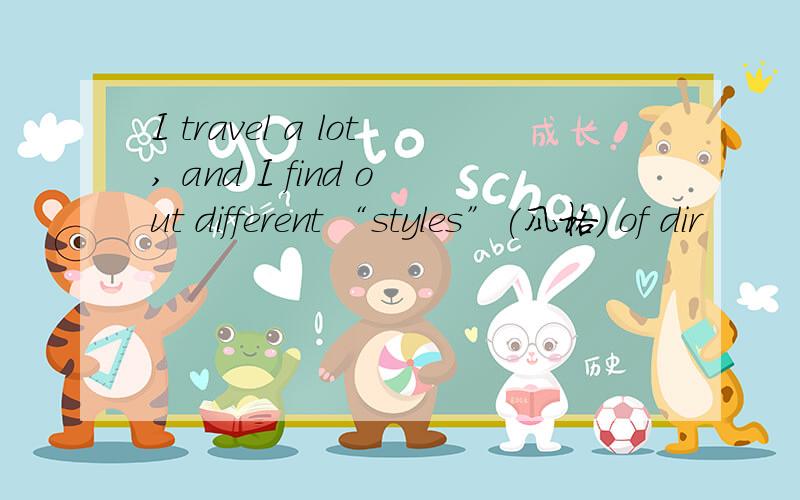I travel a lot, and I find out different “styles”(风格) of dir
来源:学生作业帮 编辑:大师作文网作业帮 分类:英语作业 时间:2024/10/11 04:24:12
| I travel a lot, and I find out different “styles”(风格) of directions every time I ask “How can I get to the post office?” Foreign tourists are often confused(困惑) in Japan because most streets there don’t have names; in Japan, people use landmarks(地标) in their directions instead of street names. For example, the Japanese will say to travelers, “Go straight down to the corner. Turn left at the big hotel and go past a fruit market. The post office is across from the bus stop.” In the countryside of the American Midwest, there are not usually many landmarks. There are no mountains, so the land is very flat; in many places there are no towns or buildings within miles. Instead of landmarks, people will tell you directions and distances. In Kansas or Iowa, for example, people will say, “Go north two miles. Turn east, and then go another mile.” People in Los Angeles, California, have no idea of distance on the map; they measure distance in time, not miles. “How far away is the post office?” you ask. “Oh,” they answer, “it’s about five minutes from here.” You say, “Yes, but how many miles away is it?” They don’t know. It’s true that a person doesn’t know the answer to your question sometimes. What happens in such a situation? A new Yorker might say, “Sorry, I have no idea.” But in Yucatan, Mexico, no one answers “I don’t know.” People in Yucatan believe that “I don’t know” is impolite. They usually give an answer, often a wrong one. A tourist can get very, very lost in Yucatan! 小题1:When a tourist asks the Japanese the way to a certain place, they usually ______.
|

小题1:D
小题2:B
小题3:C
小题4:A
作者围绕回答问路的风格,介绍了不同国度的不同文化。
小题1:细节理解题。由第二段中,In Japan, people use land marks in their directions instead of street names. 可知。
小题2:细节理解题。由倒数第二段第一句话可知。
小题3:细节理解题。由最后一段,最后两句话可知。
小题4:推理判断题。即是文章的主旨中心。
英语翻译I travel a lot,and I find out different "styles" (风格) of
If we win a lot of money I'll travel around the world and I'
一道高中英语题I’ve visited a lot of different places and stayed in
i make a lot of different country friend
初中英语求翻译I travel a lot in my work,and what I dislike about my
If I had a lot of money,I'd travel all over the world,becaus
I'm going to “travel around the world ”if i make a lot of mo
一道完形填空题".I make a lot of telephone calls.Ioften go out and v
I saw____mountains when I got out of the plane.A.a lot of B.
It's a lot of men,I konw i could find another one.
一英译汉:To my surprise, I find I have a lot of in common with y
I like ___ a lot,and my mother usually cooks it in different